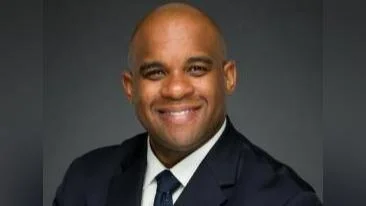Dr. Jamie Oberman | Frederick Breathe Free
Dr. Jamie Oberman | Frederick Breathe Free
- Balloon sinuplasty is a relatively new procedure, having been approved by the Food and Drug Administration in 2005.
- This procedure is becoming more popular because it has lower risks and a quicker recovery time than traditional sinus surgery.
- Surveys indicate that 91% of patients say that they would have a balloon procedure again, with only 49% of Functional Endoscopic Sinus Surgery Patients saying that they would opt for the same procedure.
“What balloon sinuplasty does is it addresses the anatomy in a minimally invasive, comfortable way for the patient without having to undergo general anesthesia, which was the conventional approach typical before the innovation with the balloons,” Dr. Oberman told the North Baltimore Journal. “Under topical and local anesthesia, you can find the normal anatomic opening and widen it essentially. A narrowed anatomic opening is what's called a hypo-ventilated, under-ventilated, unhealthy sinus, that contributes to chronic symptomatology and recurrent infections. So if you can open that anatomy with the balloon, it's much less morbid, safer for the patient, as well as more cost-effective and efficient.”
According to Healthline, balloon sinuplasty is most often recommended for people with chronic sinusitis, after other treatments for their condition have been ineffective. Balloon sinuplasty is fairly straightforward, and reported complications are minimal. There’s no cutting and no removal of bones or tissue. After a balloon sinuplasty procedure, many people are able to return to their regular activities within a day or two. Some people even drive themselves home from the procedure.
Balloon sinuplasty is performed in a hospital or the office of an ear, nose, and throat (ENT) specialist, according to Healthline. A balloon sinuplasty procedure can be performed under local or general anesthesia. Patients will consult with their doctor to develop an anesthesia plan, ensuring they understand what to expect during the procedure.
During the procedure, a small wire with a tiny flashlight at the tip is inserted into the sinus cavity, allowing the surgeon to see clearly as they work. Next, a slim, flexible balloon catheter is gently inserted into the sinus passage. The balloon is then gradually inflated to widen the sinus opening. The doctor will then flush out built-up pus and mucus in the sinus cavity with a saline solution. Patients will feel a decrease in pressure when this happens. While the balloon is in the sinus passage, it gently restructures the bones around the sinuses. Once this process is complete, doctors will remove the balloon. This leaves the sinus passage widened and free of built-up pressure.
According to Frederick Breathe Free's website, Dr. Jamie Oberman earned his bachelor's degree from Boston College. He pursued graduate studies at Tufts Medical School through the Navy Health Professions Scholarship Program. After completing medical school, he had a career in the Navy until his retirement in 2017, when he transitioned to comprehensive Ear, Nose, and Throat (ENT) medicine.


 Alerts Sign-up
Alerts Sign-up